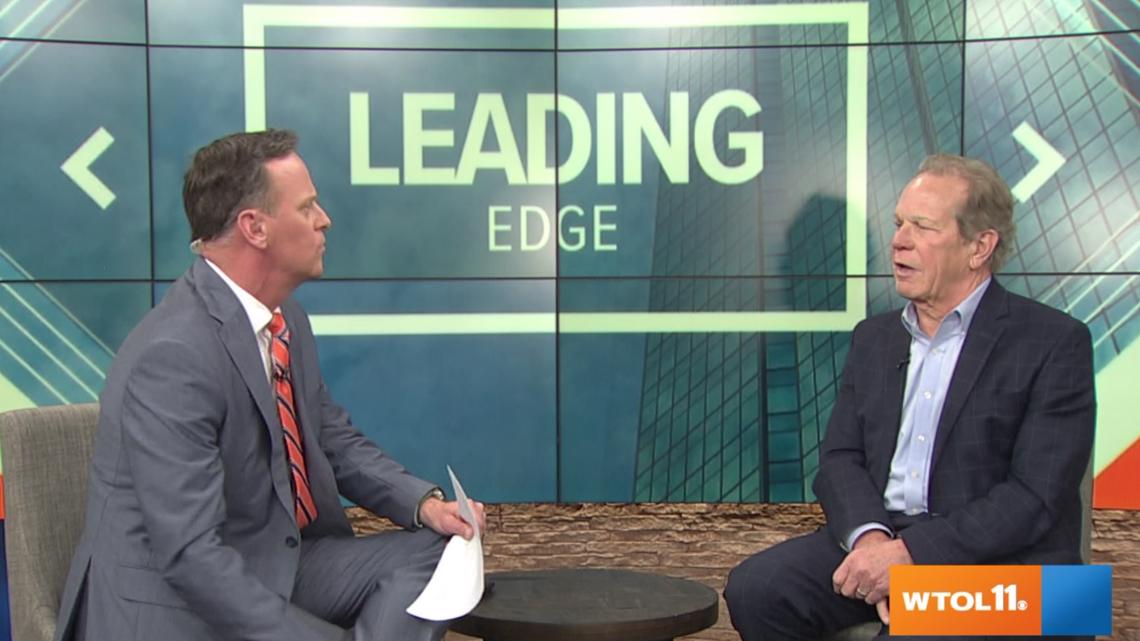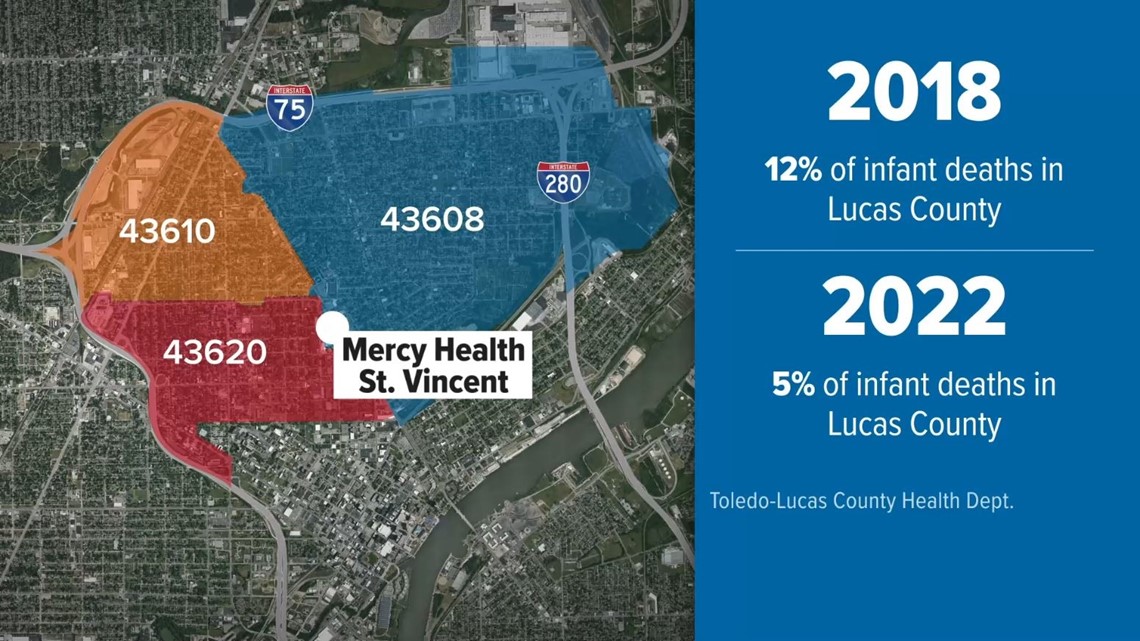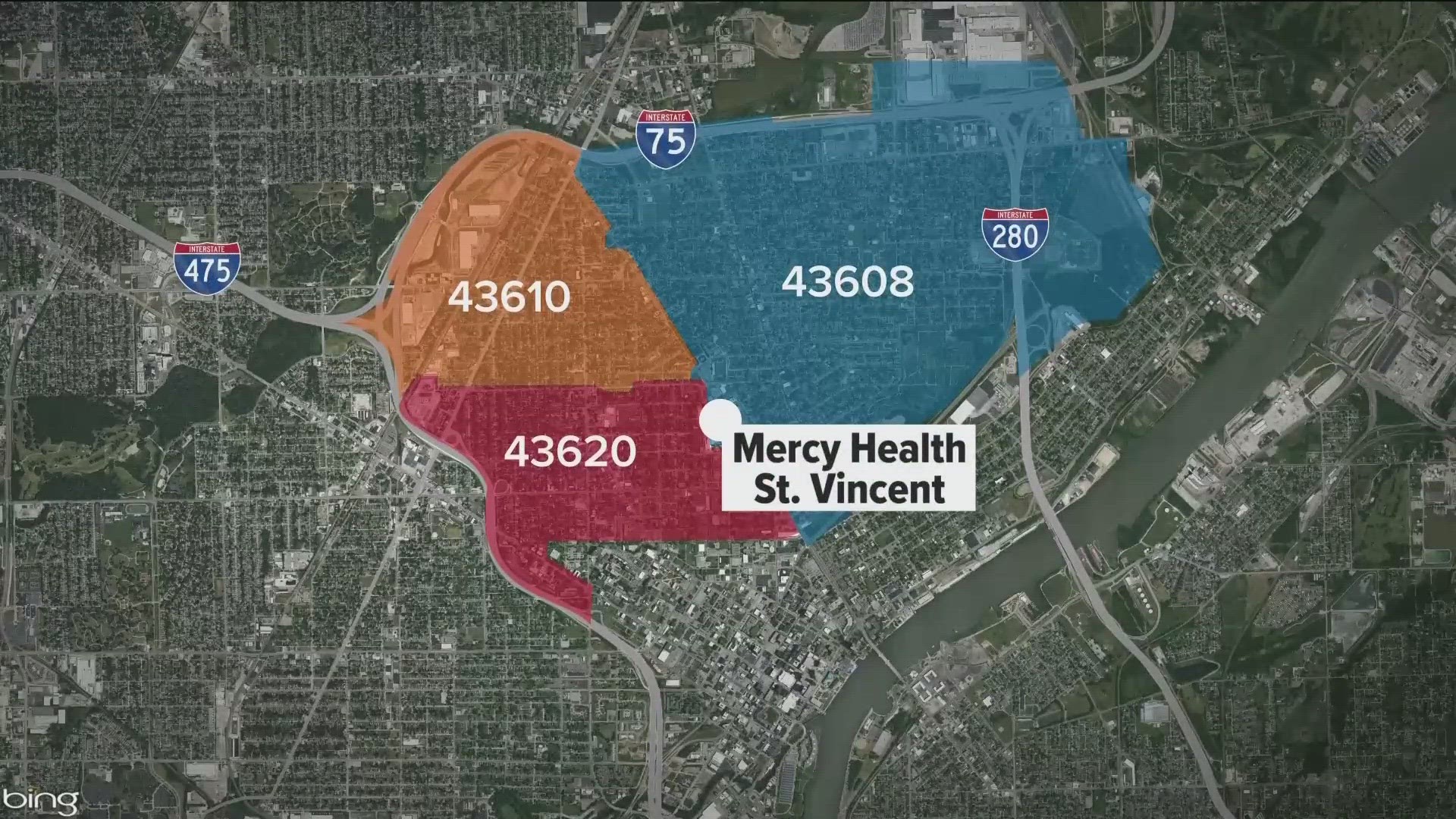TOLEDO, Ohio — Doctors, nurses, patients and the facilities that house them all are what most people think about when they hear the words “health care.”
But for northwest Ohio residents, our understanding of what health care is has taken on a new meaning over the last decade or so.
Many equate health care with concert events. Some connect health care with the sponsorship of major sporting events or redevelopment projects for once-dilapidated buildings. And there are those who equate health care with bright green, well-lit buildings – sometimes to the chagrin of area residents.
In 2012, more than 50 Sylvania residents signed a petition to get rid of the Flower Hospital lights. The petition stalled in Sylvania City Council. The lines between what health care nonprofits are, and what they are not, have become somewhat blurred.
“I think hospitals, doctors and nurses legitimately wonder whether they’re in the health care business or in the health business,” Wharton School at the University of Pennsylvania health care management professor David Asch said.
He said there are lots of pathways to health and health care is only one of them. The other paths are largely social.
“Community development, being an employer, providing education, expanding the economy, all of those things are separate pathways toward health, often more important pathways than health care,” Asch, a licensed medical doctor, said. “But I know that hospitals vary in the degree to which they actively take responsibility for those other pathways to health.”
ProMedica then and now
Randy Oostra, the former CEO of ProMedica, has often said he spent 30% of his time focused on health care and the other 70% doing things to build up the community.
He was focused on the social determinants of health: food security, job access, education opportunities and quality of life. ProMedica houses a department and a team dedicated to this initiative. However, ProMedica is not the same company it was just a few years ago. Did it get too big?
“Yeah, you can maybe say that,” said Oostra, who retired from the nonprofit in October 2022. “I mean, we were exposed, and again, I think in retrospect, we do these risk assessments and worldwide pandemic wasn't on a risk assessment.”


ProMedica named Arturo Polizzi as its new CEO in November 2022, taking over for Oostra who announced his retirement the month before. ProMedica made a $23.7 million profit in the first quarter of 2023. But that was coming off of a $346.4 million operating loss in the fourth quarter of 2022.
WTOL 11 requested interviews with Polizzi and ProMedica’s spokesperson, Tausha Moore. Both declined. Moore sent WTOL 11 a statement reading, “We’re not in a position to focus on all of this now, as we are heads down working on positioning the organization for long-term financial stability and success.”
But months removed from the position, Oostra believes the organization is headed in the right direction.
“They will continue to do the things they can for the community and the social determinants. They just need to pause right now,” said Oostra.
Mercy Health and its mission
While headquartered outside of Toledo, Mercy Health leadership in northwest Ohio says there are times it doesn’t talk enough about some of the things it has done for the community.
While there may not be concerts and sports sponsorships, there are years of investments in the Mercy Health St. Vincent Medical Center campus, the new Perrysburg Hospital and Cancer Center and several satellite branches that all provide health care options.
“I don't know that there's a bright line where that responsibility begins and ends,” Mercy Health - Toledo President Bob Baxter said. “We frame it up in terms of being good help to our communities, and trying to create some priorities out of that.”
Baxter is not oblivious to what’s happening at ProMedica and the business of health care around the country post-pandemic.
On the other side of the country for example, in California, a recent report from Kaufman Hall & Associates showed that 52% of that state’s roughly 400 hospitals now have negative operating margins. That number is nearly double the 28% seen in 2019.
“When the bridge collapses, everybody comes in with heroic efforts to take care of the injured to rebuild the bridge at great expense,” Baxter said. “But we don't pay a lot of attention to the study that came out three years beforehand that says, for a fraction of the dollars, we can prevent that bridge from collapsing. That's sort of one of the crises we have in health care today.”
Baxter also touts Mercy’s commitment to the ZIP codes around St. V’s (43608, 43610, 43620) and the work it’s done to improve infant mortality. He said in 2018, according to statistics from the Toledo Lucas County Health Department, 12% of infant deaths in Lucas County occurred in those ZIP codes. But in 2022, that number dropped to 5%.


Still, post-pandemic, does making life better in northwest Ohio rely on future investment by ProMedica and Mercy Health?
In a statement, Toledo Mayor Wade Kapszukiewicz told WTOL 11: “Regardless of their different models, Toledo needs both of them to succeed; they are two of the top five employers in our city. So their approaches are working - and we need it to continue.”
And continue they do. Mercy Health is currently assisting communities surrounding the now-closed McClaren St. Luke’s Hospital during the transition of services, even supplying employment to 400 former St. Luke’s workers. And, ProMedica is overseeing the transformation of downtown Toledo’s Jefferson Building, making way for California-based tech company Bitwise.
WTOL 11 reached out to Toledo Clinic for this story, but they did not return our phone calls.
Health care management professor David Asch also said that if it’s not health care providing the social determinants of health to various communities, it needs to be city government or some other entity “picking up the ball.”
But he warns that health care faces a more fundamental crisis, and that is how much people actually want to work. He says burnout among doctors and nurses was trending even before the pandemic hit.
RELATED VIDEO

